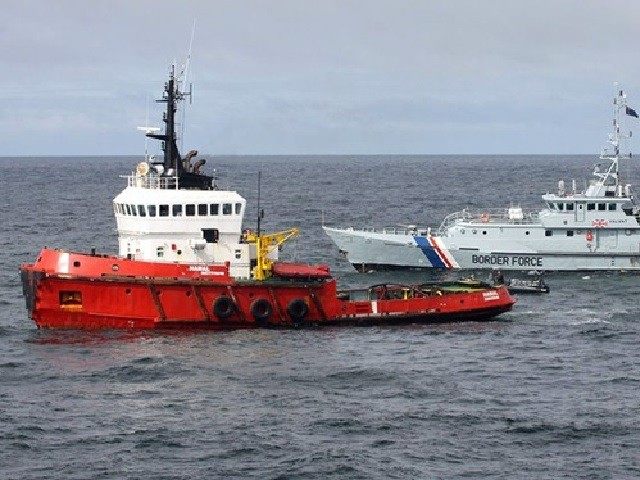A Royal Navy warship and British coast guard cutter intercepted a seagoing tug at the weekend after its unusual course caused suspicion about its true intentions, unveiling an enormous cargo of South American cocaine.
Ukrainian-owned tug MV Hamal was sailing to Northern Europe from the Canary Islands on a route which – unusually – took her around the north coast of Scotland on Sunday when the interception took place. HM Border Force pounced on the craft after received “specific information” from French customs, which led to the capture of “a very large quantity of cocaine”.
The amount of drugs taken in this single operation is so large it has yet to be weighed, but it is thought it could be over two tonnes.
The British government routinely monitors the planned navigational tracks of ships coming close to British waters to detect anomalies, especially among craft which have called in at ports in areas closely associated with the drug trade, or transnational terrorism. The national security apparatus went into full swing in 2001 after a bulk carrier bringing 26,000 tonnes of refined sugar to the Tate and Lyle plant in East London made an unscheduled stop in Dijbouti.
The ship was stopped in the English Channel by a Royal Navy warship and thoroughly searched, and although the intelligence which suggested it may have been carrying “terrorist materiel” was found to have been without foundation, the Commons defence select committee praised the event for giving the security services a ‘live’ dress rehearsal for such an event.
The Hamal was intercepted by a HM Border Force Damen Stan cutter, one of the four ships in its class. Although they work on a crew rotation system 365 days a year to patrol British waters, the government has pledged two of the craft to migrant rescue duties in the Mediterranean.

COMMENTS
Please let us know if you're having issues with commenting.